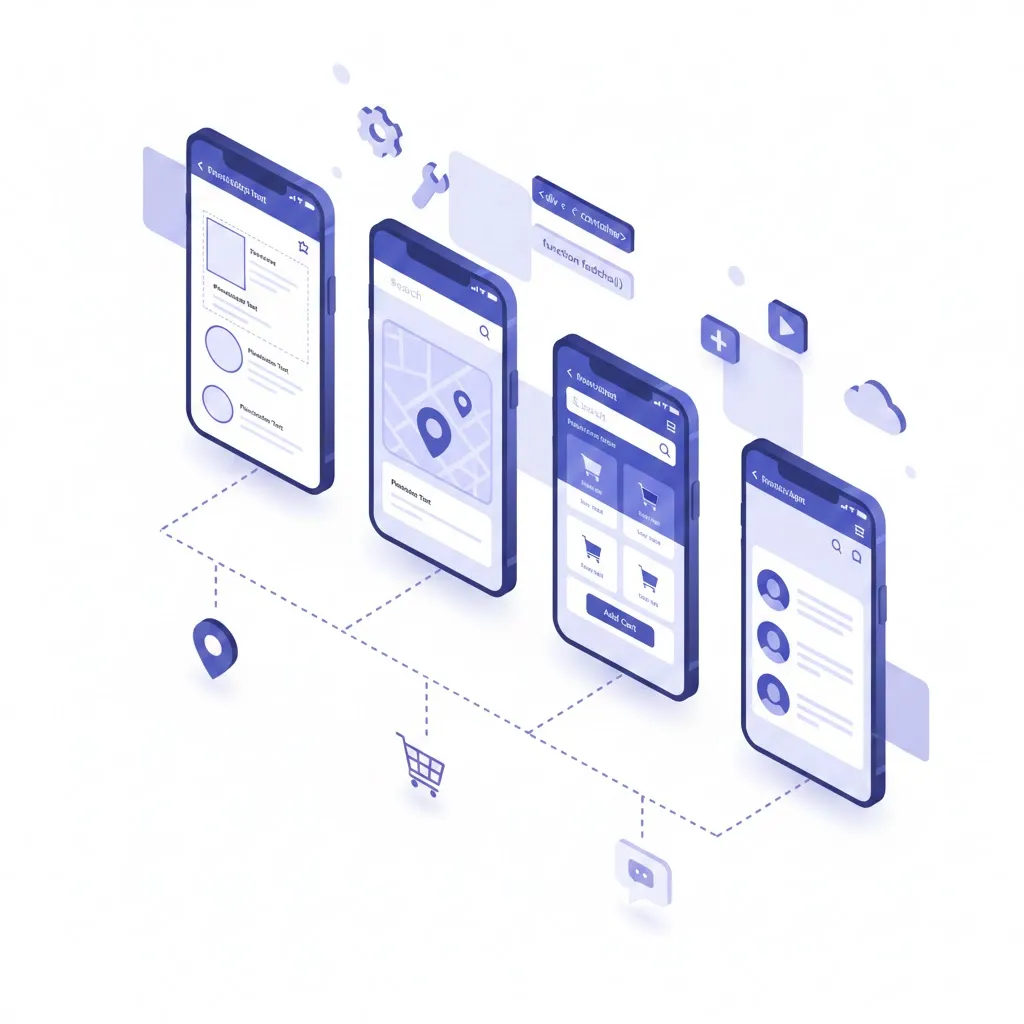Introduction
In today’s digital age, delivering a seamless user experience and engaging your audience is essential for the success of any online venture. Progressive Web Apps (PWAs) have emerged as a powerful solution to bridge the gap between web and mobile applications, offering a compelling user experience while being easily accessible. So, let’s dive in and explore the world of Progressive Web Apps, their advantages, key features, development process, SEO benefits, success stories, challenges, and the future prospects of this innovative technology.
What Are Progressive Web Apps?
Progressive Web Apps are web applications that combine the best features of traditional websites and native mobile apps. They leverage modern web capabilities to provide users with an immersive, app-like experience directly through their web browsers. Progressive Web Apps (PWAs) are meticulously crafted to ensure responsiveness, reliability, and captivating user experiences, delivering consistent performance across diverse devices and platforms. They can be accessed through URLs and don’t require installation from app stores, making them easily discoverable and accessible to a wide range of users.
Advantages of Progressive Web Apps
Progressive Web Apps offer numerous advantages for both businesses and users. Some key benefits include:
- Enhanced User Experience: PWAs deliver a smooth and immersive user experience, providing app-like interactions, smooth animations, and instant responsiveness.
- Cross-Platform Compatibility: PWAs are built using web technologies such as HTML, CSS, and JavaScript, making them compatible with various devices and platforms, including desktops, smartphones, and tablets.
- Faster Load Times: PWAs utilize techniques like caching and preloading to ensure fast loading, even in areas with limited network connectivity. As a result, user engagement is enhanced, leading to a reduction in bounce rates.
- Offline Functionality: PWAs can work offline or in low-connectivity environments, allowing users to continue accessing content and performing tasks even without a stable internet connection.
- Push Notifications: PWAs can send push notifications to users, enabling businesses to re-engage with their audience and provide real-time updates and personalized content.
Key Features of Progressive Web Apps
To qualify as a Progressive Web App, certain features and characteristics are essential. These include:
- Responsive Design: PWAs are built with a responsive design approach, ensuring optimal user experience across different screen sizes and devices.
- App-Like User Interface: PWAs feature an app-like interface, with smooth transitions, immersive full-screen mode, and navigation elements similar to native mobile apps.
- Service Workers: Service workers are a key component of PWAs, allowing them to run offline, cache data, and handle background tasks such as push notifications.
- Web App Manifest: PWAs have a web app manifest, which defines metadata such as the app’s name, icons, and theme colors, enabling users to add them to their home screens like native apps.
- Secure Connections (HTTPS): PWAs require secure connections (HTTPS) to ensure data integrity and provide a trustworthy user experience.
Developing Progressive Web Apps
Developing a Progressive Web App involves a series of steps, from initial planning to deployment. Here’s a brief overview of the development process:
- Planning and Strategy: Define the goals, target audience, and desired features of your PWA. Take into account the unique requirements of your business and your users’ preferences and demands.
- Design and User Experience: Create a user-friendly interface with intuitive navigation, smooth animations, and engaging interactions. Strive to provide a smooth and uninterrupted user experience across various devices.
- Development and Implementation: Utilize web development frameworks, tools, and libraries to build the core functionality of your PWA. Implement features such as service workers, offline caching, and push notifications.
- Testing and Optimization: Conduct comprehensive testing of your Progressive Web App on various browsers, devices, and network conditions to ensure optimal performance. Optimize performance, responsiveness, and user experience based on user feedback and analytics.
- Deployment and Promotion: Deploy your PWA to a web server and make it accessible to users through a URL. Promote your PWA through various channels, including social media, app directories, and your existing website.
SEO Benefits of Progressive Web Apps
In addition to their user-centric advantages, PWAs also offer several benefits from an SEO standpoint. Some SEO benefits of Progressive Web Apps include:
- Improved Page Load Speed: PWAs are optimized for speed, resulting in faster page load times. This can positively impact your website’s search engine rankings, as page speed is a crucial ranking factor.
- Lower Bounce Rates: With their app-like experience and fast loading, PWAs can reduce bounce rates by providing a seamless and engaging user experience, thereby improving your website’s SEO performance.
- Mobile-First Indexing: PWAs are mobile-friendly by design, aligning with Google’s mobile-first indexing approach. This can help boost your website’s visibility in search engine results pages (SERPs) on mobile devices.
- Increased User Engagement: PWAs encourage higher user engagement and longer session durations, which are metrics that search engines consider when evaluating the relevance and quality of a website.
- Improved Accessibility and Indexability: PWAs are accessible through URLs and can be easily crawled and indexed by search engine bots, ensuring that your content is discoverable and searchable.
Examples of Successful Progressive Web Apps
Several companies have successfully implemented Progressive Web Apps to enhance their online presence and user experience. Here are a few notable examples:
- Twitter Lite: Twitter Lite is a Progressive Web App that offers a lightweight, fast, and data-friendly alternative to the native Twitter app, allowing users to access their timelines, tweets, and notifications seamlessly.
- AliExpress: AliExpress, an online retail platform, leverages a Progressive Web App to deliver an app-like shopping experience, complete with fast load times, smooth navigation, and personalized recommendations.
- Starbucks: Starbucks implemented a PWA that enables users to browse their menu, customize orders, and locate nearby stores. The PWA also supports online payments and offers an engaging in-store experience.
Challenges and Limitations of Progressive Web Apps
While Progressive Web Apps offer numerous benefits, there are also some challenges and limitations to consider:
- Limited OS Integration: PWAs may not have the same level of integration with device features and operating systems as native apps, limiting certain functionalities.
- iOS Limitations: Apple’s iOS has certain limitations that affect the performance and functionality of PWAs. However, Apple continues to improve its support for PWAs with each iOS update.
- Browser Support: Although PWAs are supported by major browsers such as Chrome, Firefox, and Edge, some older browsers may not fully support all PWA features. It’s essential to consider browser compatibility during development.
- Discoverability: While PWAs can be easily shared through URLs, discoverability in app stores may be a challenge since they don’t require traditional installation.
- Storage Limitations: PWAs have limited storage capabilities compared to native apps, as they rely on browser storage mechanisms. This can impact the caching and offline functionality of certain features.
The Future of Progressive Web Apps
Progressive Web Apps have gained significant traction in recent years, and their future looks promising. As web technologies continue to evolve, we can expect further advancements in PWA capabilities, browser support, and user adoption. PWAs have the potential to bridge the gap between web and app experiences, offering a cost-effective and user-centric solution for businesses of all sizes.
Conclusion
Progressive Web Apps are revolutionizing the way we interact with the web by providing an immersive, app-like experience directly through web browsers. With their enhanced user experience, cross-platform compatibility, and SEO benefits, PWAs offer a compelling solution for businesses aiming to engage and delight their audience. As technology continues to evolve, Progressive Web Apps will play a vital role in shaping the future of web development and user experience.
FAQs
Yes, Progressive Web Apps can be shared through URLs and accessed directly through web browsers without the need for installation.
Yes, Progressive Web Apps can leverage push notifications to engage with users and provide real-time updates.
Progressive Web Apps offer faster load times, improved user engagement, and mobile-friendliness, all of which can positively impact website performance and SEO.



